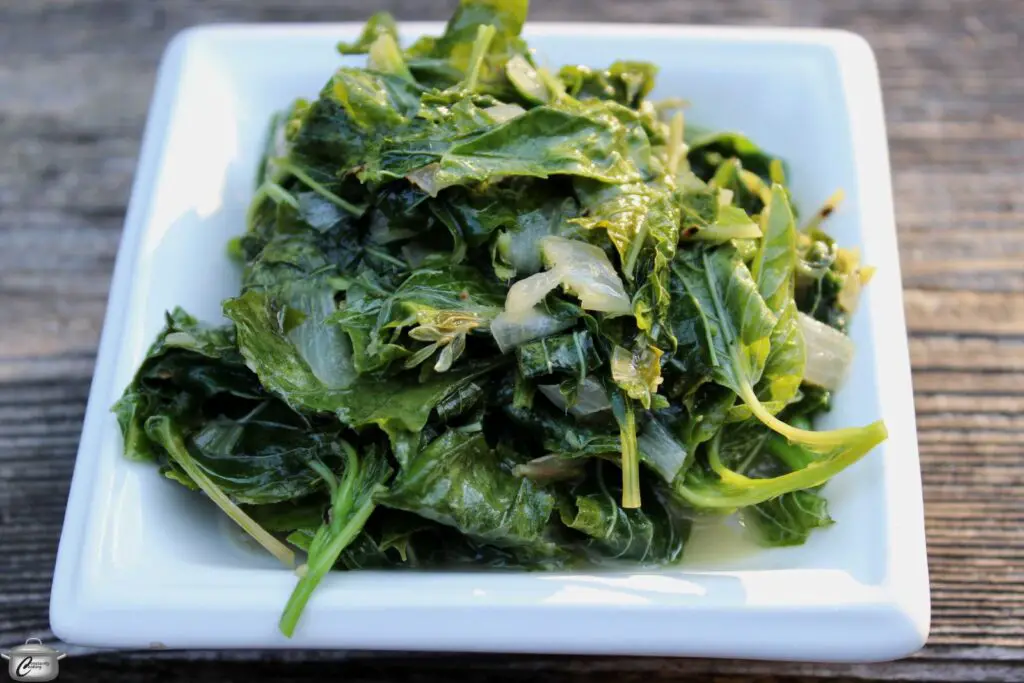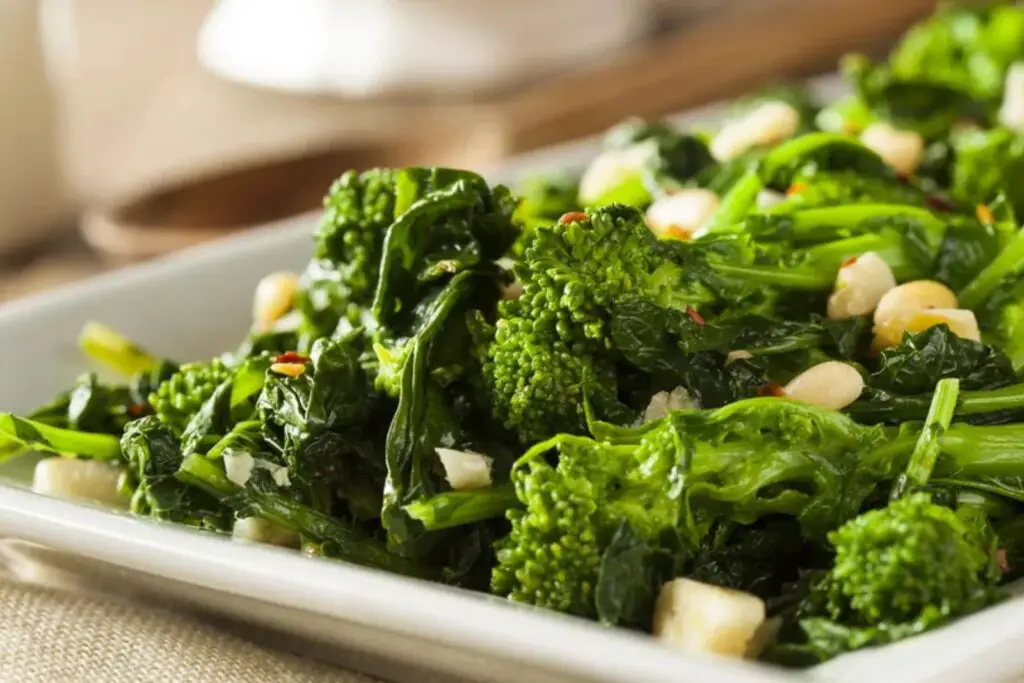
Hungarian peppers, also known as Hungarian wax peppers, are a versatile and flavorful ingredient that adds a touch of heat and tang to a variety of dishes. These vibrant yellow or red peppers are a popular choice for pickling, stuffing, or grilling, and they bring a unique and zesty flavor to recipes. If you have an abundance of Hungarian peppers or want to preserve their freshness for later use, freezing is a convenient option. Freezing Hungarian peppers allows you to extend their shelf life while retaining their vibrant color and distinct taste. In this guide, we will explore the best practices for freezing Hungarian peppers, including proper preparation, storage techniques, and thawing instructions, so you can enjoy the bold flavors of these peppers throughout the year. Join us as we embark on a journey to freeze Hungarian peppers and ensure that your kitchen is always stocked with this versatile ingredient for your culinary creations.
Here are the simple steps to freeze hungarian peppers:
- Step 1: Select Fresh Hungarian Peppers
- Step 2: Wash and Prepare the Peppers
- Step 3: Slice or Dice the Peppers (optional)
- Step 4: Blanch the Peppers
- Step 5: Drain and Dry the Peppers
- Step 6: Arrange the Peppers to Freeze
- Step 7: Flash-Freeze the Peppers
- Step 8: Package and Seal the Peppers
- Step 9: Label and date the Packages
- Step 10: Store in the Freezer
Step 1: Select Fresh Hungarian Peppers
When it comes to freezing Hungarian peppers, it’s crucial to start with fresh, high-quality peppers. Choosing peppers that are firm, ripe, and free from blemishes or signs of decay ensures that you freeze peppers at their peak freshness, resulting in better flavor and texture when you decide to use them later.
Freshness is key because the freezing process will not improve the quality of the peppers. Instead, it preserves the peppers in their current state. Therefore, selecting peppers that are already in excellent condition will help maintain their optimal taste and appearance throughout the freezing and thawing process.
Look for Hungarian peppers that are firm to the touch. Avoid peppers that feel soft or have wrinkled skin, as these are signs of aging and potential decay. The peppers should have a vibrant color and a glossy or shiny appearance, indicating their freshness.
If you’re harvesting peppers from your own garden, pick them when they are fully ripe but before they become overripe. Overripe peppers may have a softer texture and can be prone to spoiling faster. Harvesting the peppers at the right time ensures they are at their best quality for freezing.
When purchasing Hungarian peppers from a store or market, inspect them carefully. Avoid peppers with bruises, soft spots, or any signs of mold. These imperfections can affect the overall quality of the peppers and may lead to spoilage during freezing.
By selecting fresh Hungarian peppers, you’re setting the foundation for successful freezing. The quality of the peppers at the beginning will greatly influence the quality of the frozen peppers and the dishes you prepare with them in the future.
Step 2: Wash and Prepare the Peppers
Properly washing and preparing Hungarian peppers before freezing is essential to ensure that they are clean, free from dirt or debris, and ready for the freezing process. Follow these steps to prepare the peppers:
- Thoroughly wash the Hungarian peppers: Start by rinsing the peppers under cool running water. This helps remove any surface dirt, dust, or pesticides that may be present. Gently rub the peppers with your fingers to ensure that all sides are cleaned.
- Pat them dry: After washing, gently pat the peppers dry with a clean kitchen towel. Removing excess moisture helps prevent ice crystals from forming on the peppers during freezing, which can affect their texture and quality.
- Remove the stems: Trim off the stems of the Hungarian peppers using a sharp knife or kitchen shears. Simply cut around the stem, removing it along with any attached green or white parts. Removing the stems makes the peppers easier to handle and allows for more efficient packing and storage.
- Remove the seeds and membranes (optional): If desired, cut the peppers in half lengthwise. Use a knife or your fingers to gently remove the seeds and membranes from the pepper halves. The seeds and membranes can add a bitter taste to the peppers, so removing them can enhance the flavor of your dishes. However, you can choose to leave the seeds and membranes intact if you prefer a spicier flavor.
By washing the Hungarian peppers, you ensure that any potential contaminants are removed, promoting food safety. Drying the peppers prevents excess moisture, which can lead to freezer burn or texture changes during freezing. Removing the stems, seeds, and membranes allows for easier handling and customization based on your preferences when using the peppers in future recipes.
Step 3: Slice or Dice the Peppers (optional)
When preparing Hungarian peppers for freezing, you have the option to either freeze them whole or slice and dice them before freezing. This step allows you to customize the peppers based on your preferences and the intended use in future recipes. Consider the following factors when deciding whether to slice or freeze the peppers whole:
- Convenience: Slicing or dicing Hungarian peppers before freezing can make them more convenient to use in specific dishes. Pre-cut peppers are ready to go and can save you time during meal preparation. They can be easily added to stir-fries, soups, stews, or other recipes that call for diced or sliced peppers.
- Recipe requirements: Consider the recipes you plan to use the frozen Hungarian peppers in. If the recipe specifically calls for sliced or diced peppers, it may be more convenient to prepare the peppers accordingly before freezing. This way, you can easily grab the desired amount from the freezer without having to thaw and cut the whole peppers.
- Preservation of shape: Freezing Hungarian peppers whole preserves their original shape, which can be beneficial if you have specific uses in mind. For example, if you plan to stuff the peppers or use them as a garnish, keeping them whole maintains their visual appeal. Whole peppers can also be sliced or diced after thawing if needed.
Regardless of whether you choose to freeze the Hungarian peppers whole or sliced, both methods can effectively preserve the flavor and quality of the peppers. Select the option that best suits your needs and culinary preferences, ensuring a seamless cooking experience when using the frozen peppers in the future.
Step 4: Blanch the Peppers
Blanching is a crucial step in the freezing process as it helps preserve the color, texture, and flavor of Hungarian peppers. The blanching process involves briefly immersing the peppers in boiling water and then rapidly cooling them down. Here’s why blanching is important and how to do it:
- Color retention: Blanching helps maintain the vibrant color of Hungarian peppers. It helps to deactivate enzymes that can cause discoloration and loss of color during freezing. By blanching the peppers, you can enjoy the same vibrant appearance when you thaw and use them in your recipes.
- Texture preservation: Blanching helps retain the crispness and texture of the peppers. It partially cooks the peppers, which helps to break down the cell walls and slow down the enzymatic activity responsible for texture degradation. The blanching process helps the peppers maintain their firmness and structure, ensuring they remain appetizing after freezing.
- Flavor protection: Blanching also helps preserve the natural flavor of the Hungarian peppers. The brief cooking time in boiling water helps to retain their distinctive taste while reducing the chances of flavor loss during freezing.
To blanch Hungarian peppers, follow these steps:
- Bring a large pot of water to a boil: Fill a large pot with water and place it on the stove over high heat. Bring the water to a rolling boil.
- Carefully add the peppers: Once the water is boiling, carefully add the Hungarian peppers to the pot. Make sure not to overcrowd the pot, as this can result in uneven blanching. Work in batches if necessary.
- Cook for 2-3 minutes: Allow the peppers to cook in the boiling water for about 2-3 minutes. The exact timing may vary slightly depending on the size and thickness of the peppers. Be cautious not to overcook them, as this can lead to a loss of texture and flavor.
- Transfer to an ice bath: After the blanching time is complete, immediately remove the peppers from the boiling water and transfer them to an ice bath. The ice bath consists of a large bowl or sink filled with cold water and ice cubes. Placing the peppers in the ice bath rapidly cools them down, halting the cooking process.
- Cool completely and drain: Allow the peppers to cool in the ice bath for the same amount of time they were blanched. This ensures they are completely cooled and helps maintain their texture and color. Once cooled, drain the peppers thoroughly to remove excess moisture.
Blanching Hungarian peppers is a simple yet essential step to ensure their optimal quality after freezing. It helps preserve their color, texture, and flavor, making them more enjoyable when used in various recipes.
Step 5: Drain and Dry the Peppers
After blanching Hungarian peppers and cooling them in an ice bath, it’s important to drain them thoroughly and remove any excess moisture before freezing. This step helps prevent ice crystals from forming and ensures better texture and quality when you use the frozen peppers. Here’s why draining and drying the peppers is necessary and how to do it:
- Prevent ice crystals: Draining and drying the peppers after blanching helps remove excess water. If water droplets remain on the peppers, they can freeze and form ice crystals during freezing. These ice crystals can negatively impact the texture and overall quality of the peppers when thawed. Removing the moisture helps minimize the risk of freezer burn and ensures the peppers retain their integrity.
- Improve freezing efficiency: By removing excess moisture, the freezing process becomes more efficient. When there is less water on the peppers, they freeze more quickly and evenly. This helps maintain the peppers’ flavor, texture, and nutritional value.
To drain and dry blanched Hungarian peppers, follow these steps:
- Remove the peppers from the ice bath: Carefully lift the blanched peppers out of the ice bath, allowing any excess water to drain off naturally.
- Drain thoroughly: Shake off any excess water from the peppers over the sink or let them sit in a colander for a few minutes. This allows gravity to help drain the water from the peppers.
- Pat dry with a clean kitchen towel: Lay out a clean kitchen towel on a flat surface. Place the drained Hungarian peppers on the towel and gently pat them dry. Press the towel against the peppers to absorb any remaining moisture. Be careful not to apply too much pressure that could crush or damage the peppers.
By draining and drying the blanched Hungarian peppers, you’re taking an extra step to preserve their quality and minimize the risk of freezer burn. Dry peppers freeze more effectively, maintaining their taste, texture, and appearance until you’re ready to use them in your favorite recipes.
Step 6: Arrange the Peppers to Freeze
Once you have drained and dried the blanched Hungarian peppers, the next step is to arrange them in a way that allows for proper freezing. Proper arrangement ensures that the peppers freeze individually and don’t stick together, making it easier to take out the desired quantity when needed. Here’s why arranging the peppers is important and how to do it:
- Individual freezing: By arranging the peppers in a single layer, you promote individual freezing. When the peppers freeze separately, they retain their individual shape and texture, making it easier to handle and portion them later on.
- Prevention of sticking: Ensuring that the peppers do not touch each other while freezing prevents them from sticking together. If the peppers freeze together, they may become difficult to separate and can lose their original form and texture. Arranging them in a single layer prevents this issue.
To arrange the blanched and dried Hungarian peppers for freezing, follow these steps:
- Prepare a baking sheet or tray: Line a baking sheet or tray with parchment paper. The parchment paper prevents the peppers from sticking to the surface and makes it easier to remove them once frozen. Alternatively, you can use a silicone baking mat or lightly grease the baking sheet.
- Lay the peppers in a single layer: Place the blanched and dried Hungarian peppers on the prepared baking sheet or tray, ensuring they are spread out in a single layer. Make sure there is enough space between the peppers so that they do not touch each other.
- Avoid overcrowding: If you have a large quantity of peppers, use multiple baking sheets or trays to accommodate them in a single layer. Overcrowding the peppers may result in uneven freezing and sticking together.
- Consider spacing: Allow some space between the peppers to ensure proper airflow during freezing. This helps freeze the peppers more efficiently and prevents any potential moisture buildup.
By arranging the Hungarian peppers in a single layer with adequate spacing, you promote individual freezing and prevent them from sticking together. This method ensures that the frozen peppers maintain their shape, texture, and quality until you’re ready to use them in your favorite recipes.
Step 7: Flash-Freeze the Peppers
Flash-freezing is a crucial step in the freezing process that helps individualize the Hungarian peppers and prevent them from clumping together. By following this step, you ensure that the peppers freeze quickly and maintain their quality, making it easier to remove the desired quantity later on. Here’s why flash-freezing is important and how to do it:
- Individual freezing: Flash-freezing the Hungarian peppers allows each pepper to freeze quickly and separately. This prevents them from sticking together, ensuring that you can easily remove the desired quantity without having to thaw and separate them later on. Individual freezing helps maintain the peppers’ shape, texture, and overall quality.
- Preservation of quality: Flash-freezing locks in the flavors, colors, and textures of the Hungarian peppers. By freezing them rapidly, the formation of large ice crystals is minimized, reducing the risk of freezer burn and maintaining their taste and appearance.
To flash-freeze the arranged Hungarian peppers, follow these steps:
- Place the baking sheet or tray in the freezer: Carefully transfer the baking sheet or tray with the arranged peppers to the freezer. Ensure that it is placed on a level surface, so the peppers remain in a single layer and do not shift during freezing.
- Freeze for a few hours or until solid: Allow the Hungarian peppers to freeze in the freezer for a few hours or until they are completely solid. The exact freezing time may vary depending on the size and thickness of the peppers, as well as the temperature of your freezer. It is recommended to check them periodically until they are completely frozen.
Flash-freezing the peppers individually helps maintain their individual integrity, making it easier to portion them later without any clumping. It also helps preserve their taste, texture, and overall quality. Once the peppers are fully frozen, you can proceed to the next step to package and seal them for long-term storage.
Step 8: Package and Seal the Peppers
Once the Hungarian peppers are flash-frozen and solid, it’s time to transfer them into suitable freezer-safe containers or resealable plastic bags for long-term storage. Proper packaging and sealing help protect the peppers from freezer burn and maintain their quality. Here’s why packaging and sealing are important and how to do it:
- Protection against freezer burn: Freezer burn occurs when moisture from the food evaporates, leaving behind dry spots and affecting its texture and taste. Proper packaging helps prevent freezer burn by creating a barrier that limits air exposure. This is especially important for maintaining the quality of the Hungarian peppers over an extended period of time.
- Maintaining quality and freshness: By removing as much air as possible from the packaging, you reduce the chances of oxidation and the development of ice crystals on the peppers. This helps maintain their flavor, texture, and overall quality. Proper packaging also prevents cross-contamination and odors from other foods in the freezer.
To package and seal the frozen Hungarian peppers, follow these steps:
- Select freezer-safe containers or resealable plastic bags: Choose containers or bags specifically designed for freezer storage. They should be durable, airtight, and resistant to moisture. Opt for containers or bags that are appropriately sized to accommodate the amount of peppers you plan to store.
- Transfer the frozen peppers: Carefully transfer the frozen Hungarian peppers from the baking sheet or tray into the containers or bags. If using bags, it may be helpful to fill them while keeping the peppers in a single layer, preventing clumping. Leave some headspace in the containers or bags to allow for expansion during freezing.
- Remove as much air as possible: Squeeze out excess air from the bags before sealing them. If using containers, press the lids tightly to create an airtight seal. Minimizing the presence of air helps prevent freezer burn and maintain the quality of the peppers.
Proper packaging and sealing are crucial for maintaining the quality of the frozen Hungarian peppers. By minimizing air exposure and protecting against freezer burn, you can enjoy flavorful and well-preserved peppers when you’re ready to use them in your favorite recipes.
Step 9: Label and date the Packages
Labeling and dating the packages of frozen Hungarian peppers is a crucial step for easy identification and proper rotation when using them later on. By clearly marking the contents and freezing date, you can keep track of the peppers’ freshness and ensure that you use the oldest ones first. Here’s why labeling and dating are important and how to do it:
- Easy identification: Labeling the packages with the contents, in this case, Hungarian peppers, helps you quickly identify them among other items in the freezer. This is especially helpful if you have various frozen ingredients stored, as it saves time and minimizes the need for guesswork.
- Freshness tracking: By dating the packages, you establish a clear record of when the Hungarian peppers were frozen. This allows you to keep track of their age and use them in the proper order based on the “first in, first out” principle. Using the oldest peppers first ensures that you maintain their optimal quality and minimize any potential food waste.
To label and date the packages of frozen Hungarian peppers, follow these steps:
- Gather the necessary materials: Grab a permanent marker that is suitable for writing on the packaging material. Avoid using regular ink pens, as they may fade or smudge over time in the freezer.
- Label the packages: Write “Hungarian Peppers” or simply “Peppers” on each package, making it clear what the contents are. Be sure to write legibly and prominently so that the label is easily visible.
- Date the packages: Next to the contents label, write the date of freezing. Include the month, day, and year. This information helps you keep track of the peppers’ freshness and determine when to use them.
- Consider additional information (optional): If desired, you can add additional details to the label, such as the quantity of peppers in the package or any specific instructions or notes that may be helpful for future reference.
By labeling and dating the packages of frozen Hungarian peppers, you create an organized system that ensures easy identification and proper usage. This small step goes a long way in helping you maintain the best quality and flavor of the peppers throughout their freezer storage.
Step 10: Store in the Freezer
After properly labeling and dating the packages of frozen Hungarian peppers, it’s time to store them in the freezer. Proper storage conditions help maintain the quality, flavor, and safety of the peppers for an extended period. Here’s why storing the peppers correctly is important and how to do it:
- Temperature control: The freezer temperature plays a critical role in preserving the quality and safety of the Hungarian peppers. Maintain a consistent freezing temperature of 0°F (-18°C) or below. This low temperature prevents the growth of microorganisms and helps retain the peppers’ flavor, texture, and nutritional value. Regularly check and monitor your freezer’s temperature to ensure it stays within the appropriate range.
- Protection from damage: Store the labeled packages in a location within the freezer where they won’t be easily crushed or disturbed. Avoid placing heavy items on top of the packages, as this can cause them to become squished or damaged. Properly organizing the freezer space ensures that the peppers remain intact and easy to access.
To store the labeled packages of Hungarian peppers in the freezer, follow these steps:
- Find suitable freezer space: Choose a designated spot in your freezer where you can store the Hungarian pepper packages. Consider available space and make sure it is easily accessible.
- Arrange packages for easy access: Place the labeled packages in the designated freezer space, keeping them organized and easily visible. If you have multiple packages, you can stack them, but ensure they remain stable and won’t topple over.
- Avoid temperature fluctuations: Ensure that the freezer door is tightly sealed to maintain a consistent freezing temperature. Avoid frequent opening and closing of the freezer door, as this can lead to temperature fluctuations that may affect the quality of the peppers.
By storing the labeled packages of Hungarian peppers in a properly maintained freezer at the appropriate temperature, you ensure the peppers remain fresh, safe to eat, and of high quality. This allows you to enjoy the flavors of the peppers throughout the extended freezer storage period.
How long can Hungarian peppers last in the freezer?
Hungarian peppers can last in the freezer for about 8 to 12 months. When properly stored at a consistent temperature of 0°F (-18°C) or below, they maintain their flavor, texture, and nutritional value. It is recommended to use the oldest frozen peppers first to ensure the best quality and taste.
Other related questions
How do you defrost Hungarian peppers?
To defrost Hungarian peppers, there are a few methods to choose from. The recommended method is to transfer the frozen peppers to the refrigerator and allow them to thaw slowly overnight or for several hours. Alternatively, you can defrost them using the defrost setting on your microwave or by placing the frozen peppers in a sealed plastic bag and submerging them in cold water.
Can you refreeze Hungarian peppers?
Refreezing Hungarian peppers is not recommended. Once peppers have been thawed, their texture and quality can be compromised, and refreezing them may result in a loss of flavor and overall deterioration. It is best to use the thawed Hungarian peppers promptly or incorporate them into cooked dishes, rather than attempting to refreeze them. Proper planning and portioning can help minimize the need for refreezing and maintain the best quality of the peppers.
How do I know if the Hungarian peppers have gone bad after being frozen?
After being frozen, there are a few signs to look for to determine if Hungarian peppers have gone bad. Check for any changes in color, texture, or appearance, such as excessive browning, mushiness, or freezer burn. Additionally, a strong off-putting odor or a sour smell can indicate spoilage. If you notice any of these signs, it is best to discard the Hungarian peppers to ensure food safety and maintain optimal quality.
Can I freeze Hungarian peppers for use in recipes like stuffed peppers or stir-fries?
Yes, you can freeze Hungarian peppers for use in recipes like stuffed peppers or stir-fries. Start by washing and drying the peppers thoroughly. Remove the seeds and stems if desired, then slice or dice the peppers according to your recipe’s requirements. Place the prepared peppers in airtight freezer bags or containers, removing excess air, and label them with the date.
Can I freeze Hungarian peppers for use in soups or stews?
Yes, you can freeze Hungarian peppers for use in soups or stews. Begin by washing and drying the peppers thoroughly. Remove the seeds and stems if desired, then slice or dice the peppers according to your recipe’s requirements. Place the prepared peppers in airtight freezer bags or containers, removing excess air, and label them with the date.
Can I freeze Hungarian peppers for making paprika or spice blends?
It is not recommended to freeze Hungarian peppers specifically for making paprika or spice blends. Hungarian peppers are traditionally dried and ground to make paprika, which helps preserve their flavor and color. Freezing can alter the texture and moisture content, making them less suitable for drying and grinding. Instead, it is advised to dry Hungarian peppers using traditional methods or purchase pre-made paprika for spice blends.








